As you navigate through the demanding terrains and unrelenting bouts of rain on construction sites, the gear you wear can make a significant impact on your comfort and safety. For construction workers, the durability of their rain gear—be it rain jackets, boots, or pants—is of paramount importance. But what constitutes 'durable' rain gear? Is it the material, the brand, the cost, or a blend of all these factors? In this comprehensive guide, we delve deep into the realm of construction worker rain gear, discovering how the right materials can enhance durability and transform an ordinary piece of clothing into a long-lasting, durable companion. As we walk (or wade) through the world of rain gear, we will uncover the essentials of protection, learn about the most suitable materials, and thoughtfully consider their environmental impact. So sit back, snug up in your (hopefully durable) raincoat, and join us on this informative journey.
Importance of Durable Rain Gear for Construction Workers
The construction industry is a beehive of activities come rain or shine, putting its workers continually in the frontline. Whether they are laying bricks, pouring concrete, framing houses or installing roofing, their safety is paramount. As such, a piece of dependable rain gear emerges not as a luxury but a necessity. In this context, we explore how sturdy and dependable rain gear aids construction workers in maintaining their safety and fostering endurance amidst unfavorable weather conditions.
Protection from Injuries
The nature of a construction site is inherently risky, with potential hazards at every turn. Couple this with rain and you have a recipe for all manner of injuries. One way to mitigate such risks is by investing in strong and sturdy rain gear. Here's how:
- Minimize Slip-and-Fall Accidents: Wet surfaces are notoriously slippery. Durable waterproof clothing reduces the chances of workers getting drenched, losing balance, and having an accidental fall.
- Keep Visibility High: Heavy rain can obscure a worker's field of view, increasing the chances of mishaps. Waterproof gear often comes with bright colors and reflective accents, improving visibility for both the wearer and their colleagues.
- Shielding from Flying Debris: During a downpour, the likelihood of loose materials flying around increases. Well-made rain gear can provide an additional layer of protection, potentially saving workers from injury.
Essential for Endurance in Weather
Apart from safety, durable rain gear promotes productivity and endurance, reducing the issues caused by rain and snow on the construction site.
- Prevent Hypothermia and Other Illnesses: Rain can quickly soak a worker, exposing them to cold-related illnesses like hypothermia. Practical rain gear keeps you warm and dry, protecting you from weather-related health risks.
- Ensure Uninterrupted Workflow: With quality rain gear, work can continue relatively unhindered, even in a downpour, preventing costly delays and damage to materials.
Keen on investing in appropriate rainwear for work? Consider checking out the Essential Rain Gear for Construction to explore different options available.
In essence, equipping construction workers with durable rain gear is a crucial consideration both for safety and work efficiency. Not only does it provide a shield against potential injuries, but it also paves the way for a continued workflow, even in adverse weather conditions. After all, as the saying goes, the show must go on, and in the world of construction, it often does, thanks to reliable rain gear.
Optimal Materials for Long-Lasting Rain Gear
Choosing the best rain gear is no walk in the park - or walk in the rain for that matter! It's all about picking the right materials which, ideally, should be both water-resistant and durable. When it comes to rain gear, Nylon and Polyester, Sentinel™, and other materials like PVC, Neoprene, Cotton, and Fleece have proven themselves to be extremely reliable.
Nylon and Polyester
For those craving an excellent blend of waterproof, wind-resistant, and outstanding wear-resistance properties, look no further than Nylon and Polyester. Rain gear made from these materials has shown a remarkable ability to maintain its integrity under the most challenging weather conditions, guaranteeing you stay dry and ensuring the longevity of the clothing.
Sentinel™
Another marvelous marvel in the world of materials is Sentinel™. This modern material takes rainwear to another level, with the ability to protect workers from dangerous electrical hazards such as electric arcs and flash fires.
Rain gear crafted from Sentinel™ not only provides substantial protection against the elements but also significantly improves user safety. It excels in terms of durability, exceeding the usable life and comfort provided by other types of rain gear.
PVC, Neoprene, Cotton, and Fleece
For those who crave exceptional quality, PVC, Neoprene, Cotton, and Fleece earn their stripes, particularly when it comes to rain gear. Each brings a unique blend of properties to the table, ensuring they well-equip you for whatever weather Mother Nature decides to throw your way!
In essence, the material you opt for plays a vital role in determining the waterproofness, breathability, durability, and overall performance of your rain gear. Picking the right one for your needs could almost seem like finding the pot of gold at the end of the rainbow! For more in-depth knowledge on quality raingear, we recommend checking out the discussion on Waterproof and Tear Resistant Rain Gear. You're sure to find your perfect fit!
Engineering Durability - Rain Gear Materials
In the daily pursuit of outdoor activities, you may face the challenge of adverse weather conditions. From sudden showers to prolonged downpours, the need for durable and protective gear becomes evident. And when it comes to durable rain gear, it is not enough for it just to be water-resistant. The worn apparel should highly resist wear and tear and, in hazardous environments, offer safety against potential threats like electrical arcs and flash fires.
Resilience to Wear and Tear
Durability is paramount when selecting rain gear materials. A high-quality rain suit will not only keep you dry but also withstand the elements, ensuring it remains fit for use time and again. Among the different materials used for rain gear, PVC (Polyvinyl Chloride), Polyurethane, and Nylon stand out, known for their superb resilience.
PVC (Polyvinyl Chloride):
- Creates robust, rugged gear capable of surviving roughhandling.
- Features high resistance to abrasion and tear, even in extreme conditions.
- Used in heavy-duty rainwear intended for extended wear and professional outdoor work.
Polyurethane:
- Provides excellent flexibility and comfort without compromising durability.
- Boasts a great balance of water resistance and breathability, making it a popular choice for outdoor activities.
- Resist grinding stress and exposure to sun, maintaining its integrity over time.
Nylon:
- Often found in high-end rain jackets due to its impressive durability.
- Exceptional tear and abrasion-resistance, outlasting natural materials under heavy stress.
- Offers a light, breathable experience, with increased rain and wind protection.
Electric Arc and Flash Fire Safety
In specialized sectors like construction, utilities, oil and gas, and other hazardous industries, comprehensive protection goes beyond standard weather conditions. It also involves safeguarding against electric arc flashes and flash fires, events posing serious risks in these circles.
Selecting gear comprising materials like Nomex and Kevlar, renowned for their exceptional flame resistance and resilience, is a great measure.
Nomex:
- Synthetic, heat-resistant material.
- Does not catch fire, merely carbonizing and thickening when exposed to extreme heat.
- Gives compliant gear, proven in occupations where fire-resistant garments are crucial.
Kevlar:
- Proprietary material with remarkable tensile strength.
- Resists burning and withstands huge temperatures before degradation.
- Woven into gear, it ensures durability and added resistance against electrical hazards and flames.
When it comes to ensuring safety, the vibrant role played by durable rain gear materials cannot be underestimated. Their immense strength against wear and tear and their ability to resist electrical and fire dangers are testament to their importance in protective clothing. By embracing these innovative materials, you are not only signing up for dry comfort but also for crucial safety in the face of potential hazards. As they say, it’s always better to be safe than sorry.
Environmental Implications of Rain Gear Production
The word 'rain gear' usually conjures images of umbrellas, raincoats, and waterproof boots that shield us from the pesky rain showers. But have you ever paused to ponder about the journey of these gear - from the factory floor to the retail shelves? Spoiler alert! It's an intriguing but concerning tale. With the perfect blend of technological innovation and resource utilization, the production process of rain gear can leave an alarming environmental footprint.
Materials like nylon and polyvinyl chloride (PVC), prevalent in most rain gear production systems, are notorious for their non-biodegradable nature. They take hundreds of years to decompose, contributing to the ever-growing mountains of garbage. Not to mention, their manufacturing directly emits harmful substances into the environment.
Let's dig a little deeper into the significant environmental implications of rain gear production:
- Natural Resource Depletion: Water and energy hog a major portion of our natural resources consumed during the production process. Manufacturing a single piece of polyurethane-based rain jacket requires gallons of water and sizable energy amounts.
- Air and Water Pollution: The chemical treatments involved in making these materials waterproof give rise to volatile compounds like phthalates, heavy metals, and dioxins. These pollutants refuse to break down in the environment, causing long-term damages to air, water, and soil health.
- Waste Generation: An unintended consequence of the disposable culture surrounding rain gear. When the umbrella breaks or the raincoat tears, we are quick to toss and replace, adding to the waste heaps. Even something as delightful as new boots can be a strain on landfill spaces!
A painful truth that emerges from our expedition into the world of rain gear production is that the production of replacement building materials can deplete natural resources and cause pollution. The next time you're tempted by the latest rain gear on the rack, remember the environmental cost it carries. Consider repairing, recycling, or investing in eco-friendly alternatives. After all, taking care of Mother Nature is the real shield we need against the rainy-day blues!
In the end, there is an undeniable reality that we need to swiftly address the environmental implications of rain gear production. It is undeniably our integral responsibility as patrons on this shared planet. This also demands us to rethink our consumption habits and explore sustainable measures that can help preserve the earth for future generations.
Choosing the Right Rain Gear - A Balanced Decision
Selecting the right rain gear, particularly for construction workers, involves more than just picking up the first jacket that says "waterproof." You want assurance that it'll withstand grueling conditions, keep you bone dry on the rainiest days, allow enough airflow to keep you comfortable, and of course, be cozily worn throughout the day. In short, the perfect rain gear is a balanced blend of durability, waterproofing, breathability, and comfort.
Durability
Durability is key when selecting rain gear. After all, these aren't your average daily-wear items, but ones expected to handle heavy downpours and harsh working environments often found in construction sites. There are several factors which make rain gear durable:
- Material: Look for rain gear made using hard-wearing fabrics like polyester or nylon with a solid denier count, as this represents the material's thickness.
- Craftsmanship: Check for solid sewing and heat-sealed seams which add strength and increase the product's longevity.
- Reinforced Areas: Wear and tear mostly tend to occur in certain spots like elbows and shoulders. Gear with reinforced patches in these areas offers added durability.
Waterproofing
It doesn't take a genius to know that the primary function of rain gear is to keep you dry. But waterproofing isn't a simple high-or-low feature. A variety of elements come together to create a truly waterproof gear.
- Material: Alongside being tough, the material should be impermeable. Generally, manufacturers use a coating or membrane on the fabric to achieve this.
- Design: The style of the outfit itself affects its waterproofing capabilities. Designs with flaps over zippers, adjustable cuffs, and sealed seams are superior in keeping out water.
Breathability
Breathability is often underestimated when it comes to rain gear. But isn't it frustrating when your gear keeps out the rain only for sweat to accumulate inside, drenching you anyway? That's where breathability steps in. It allows moisture from your body to escape, keeping you dry from the inside out.
In our in-depth guide on Choosing the Right Rain Gear, we discuss how to find breathable gear which often uses special fabric technology to allow air circulation without compromising waterproofing.
Comfort
Finally, comfort is paramount. Fit, weight, and flexibility all play major roles in how comfortable your rain gear is.
Comfortable rain gear should:
- Fit well but still offer freedom of movement.
- Be lightweight so you're not lugging extra pounds around all day.
- Have a bit of stretch to accommodate your movements without stressing the garment.
In summation, selecting the right rain gear is a strategic decision where one must weigh between durability, waterproofing, breathability, and comfort. But with a touch of insight, it's a decision that can bring you the perfect rainwear for any drizzly situation.
Conclusion
Selecting the right rain gear for construction workers involves more than just ensuring waterproof properties. Essential factors such as durability, breathability, comfort, and the material's suitability to weather conditions must also be taken into account. A focus on these areas ensures workers' safety and increased productivity in the field, even in unfavorable weather circumstances.
At Hurricane Raingear, we believe in providing a waterproof solution that serves beyond just being a barrier against rain. Our rain gear is a product of extensive research and advanced technology. The use of superior materials such as Nylon, Polyester, and our unique Sentinel™ fabric allows us to offer rain gear that is both resilient and comfortable to wear.
So, if you're in the market for lasting, reliable rain gear that promises both safety and comfort, remember—balancing your priorities is key. And we’re here to help you strike that balance. Navigate the unpredictable with Hurricane Raingear—where strength meets comfort.
Frequently Asked Questions
-
What are the best materials for rain gear for construction workers?
The best materials for rain gear for construction workers are: 1. PVC-coated polyester, 2. Nylon, 3. Gore-Tex, 4. Polyurethane, and 5. Neoprene.
-
Which material provides the highest level of durability for rain gear?
Among the different materials used for rain gear, PVC-coated polyester is known for its exceptional durability. It is resistant to abrasions, punctures, and tears, making it ideal for construction workers who need reliable rain protection.
-
Are all rain gear materials waterproof?
Not all rain gear materials are completely waterproof. However, materials like Gore-Tex, PVC-coated polyester, and polyurethane provide excellent waterproofing capabilities, keeping construction workers dry even in heavy rain.
-
What other factors should I consider besides material when selecting rain gear for construction workers?
In addition to material, you should also consider factors such as comfort, breathability, visibility (reflective strips), ease of movement, and additional features like adjustable cuffs and hoods to ensure the rain gear meets the specific needs of construction workers.
-
Can rain gear materials be damaged by work-related hazards or chemicals?
Yes, certain work-related hazards like sharp objects or chemicals can potentially damage rain gear materials. It's important to select rain gear that is resistant to punctures, tears, and chemical exposure if construction workers are likely to encounter such hazards on the job.



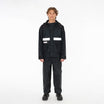



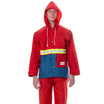


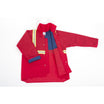

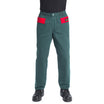



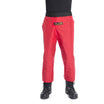




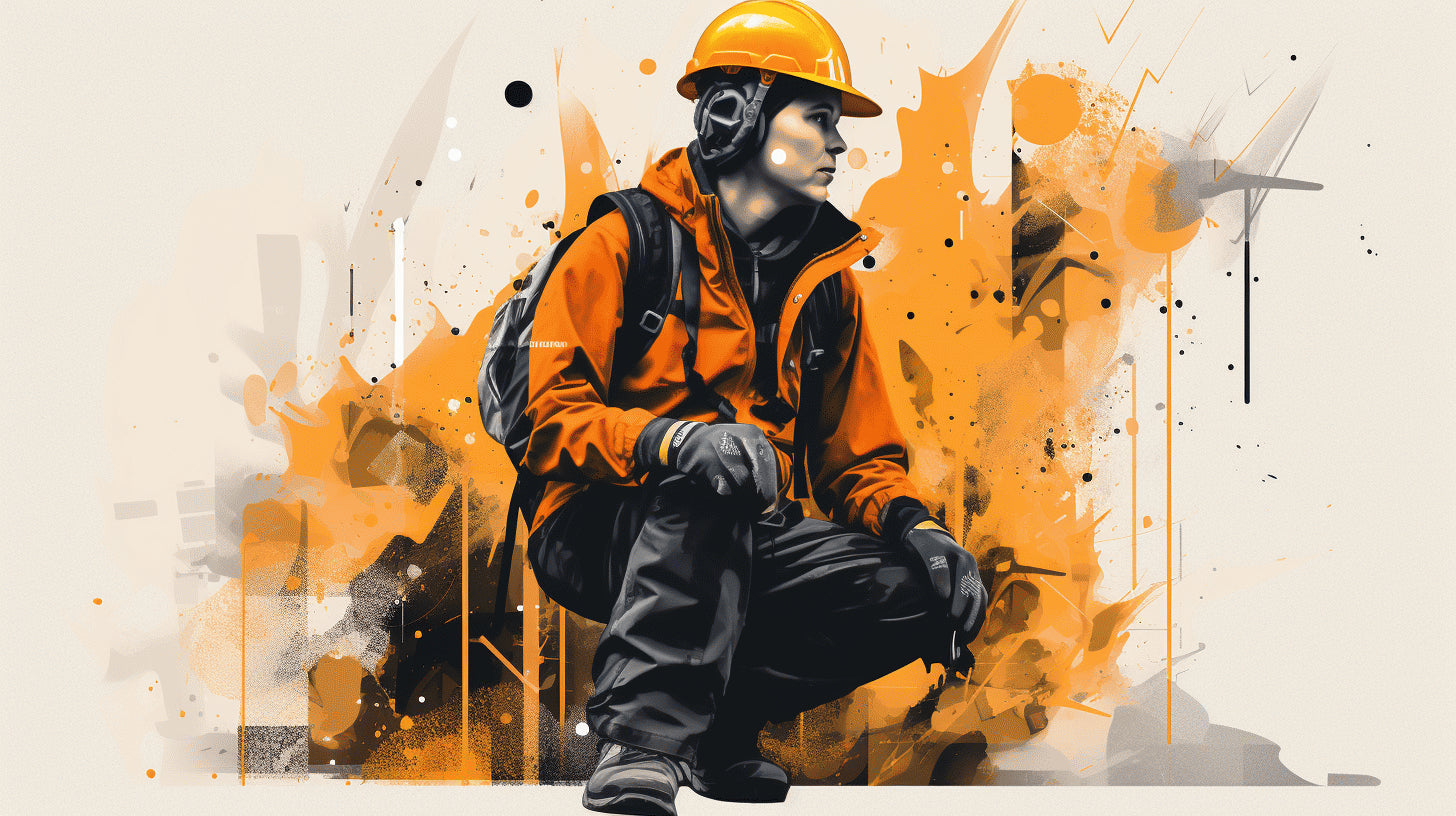
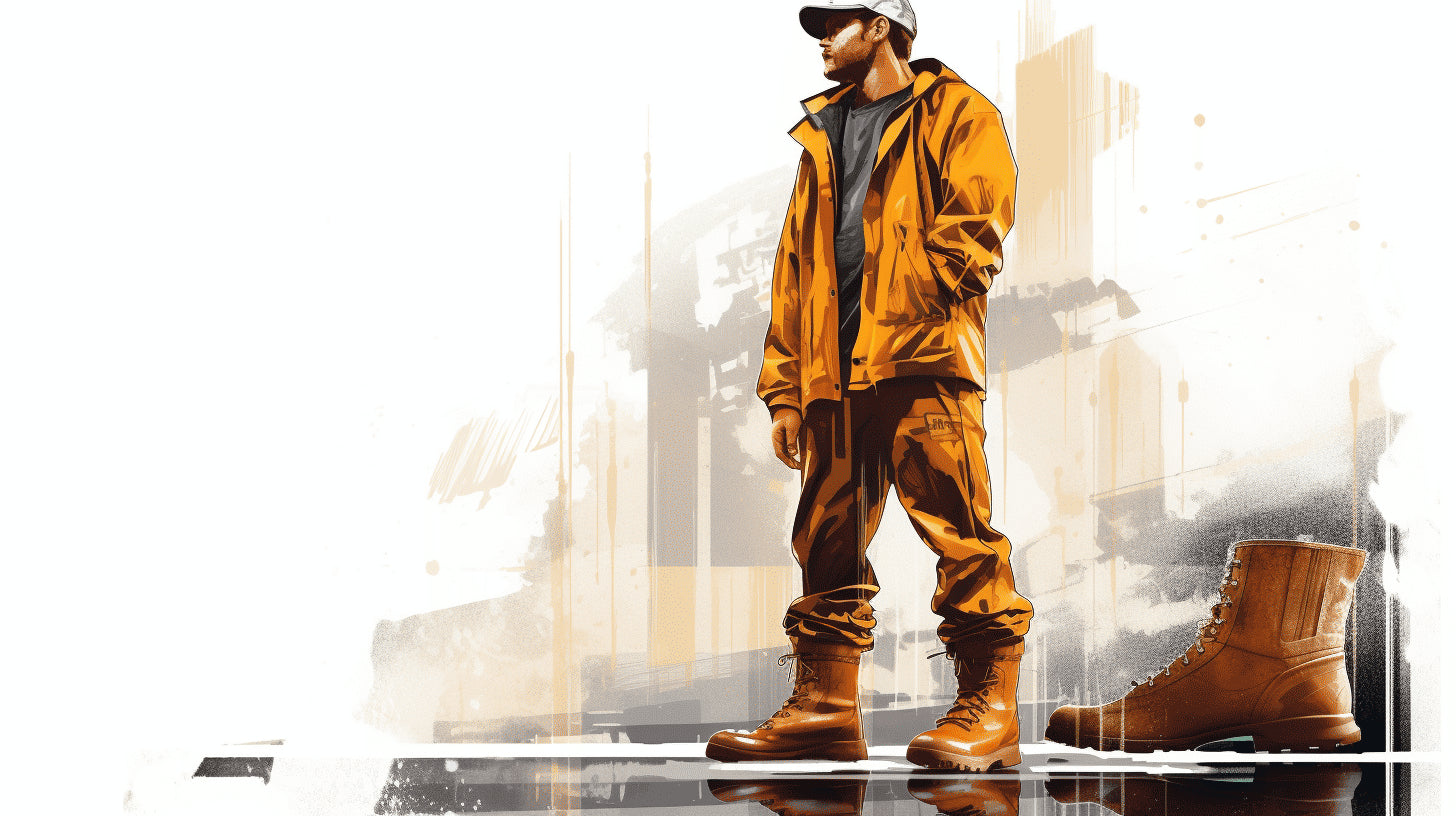
Leave a comment
This site is protected by hCaptcha and the hCaptcha Privacy Policy and Terms of Service apply.